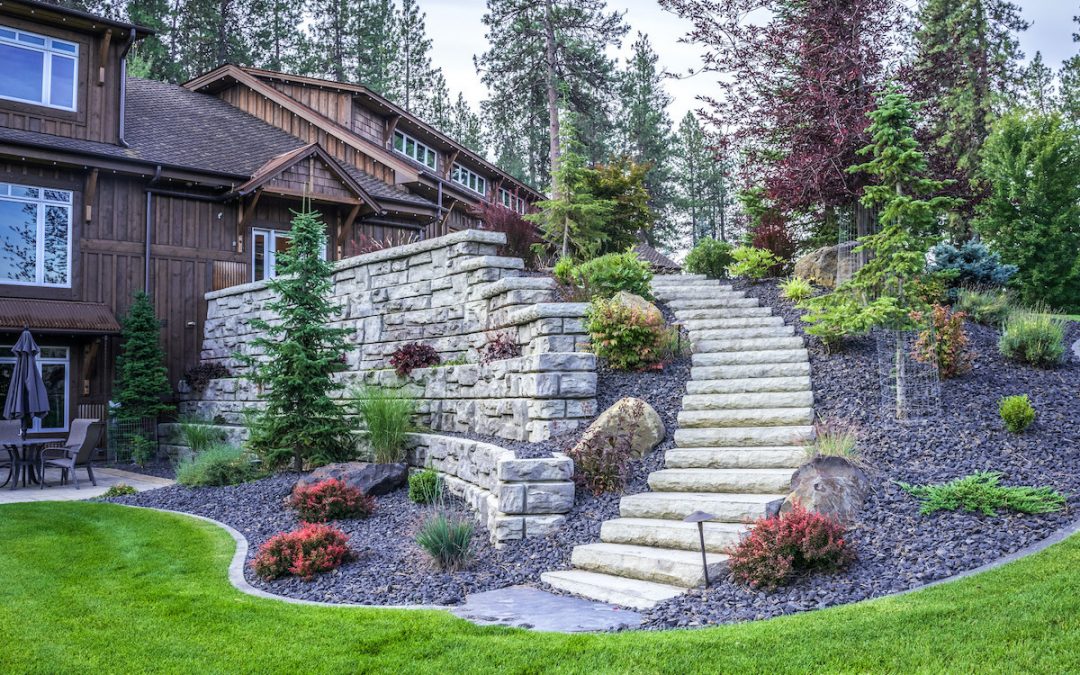Retaining walls are often found in places where extra support is needed to prevent the earth from moving. The most basic function of a retaining wall is to battle gravity. The lateral force of the slope must be offset in the retaining wall’s design. They can also provide usable land, prevent erosion, and defy the force of gravity. Retaining walls are found around many homes, businesses and schools.
What is a Retaining Wall and What Does it Do?
1. Erosion
You need a way to control downhill erosion. If erosion materials are clogging important areas on your property, adding a retaining wall is a wonderful idea. Retaining walls decrease erosion by decreasing the angle of a slope and holding back soil.
2. Soil Fault Lines
Your home is downhill from soil fault lines. As any landscaping contractor will tell you, even if erosion isn’t threatening your home now, it could under the right conditions like severe storms. In an earthquake, land typically slides away from fault lines.
The Ramapo Fault zone is a system of faults between the northern Appalachian Mountains and Piedmont areas to the east. Earthquake rates in the northeastern United States are 100 times lower than in California, but the earthquakes that do occur in the northeast are typically felt over a much broader region than earthquakes of the same magnitude in the west. This means the area of damage from an earthquake in the northeast could be larger than the area of damage caused by an earthquake of the same magnitude in the west. The cooler rocks in the northeast contribute to the seismic energy propagating as much as ten times further than in the warmer rocks of California. In New Jersey, Rahway, Bernardsville, and Basking Ridge are susceptible to fault line soil displacement. If your home is located downhill from a fault line, a retaining wall can provide stability and peace of mind.
3. Erosion
Your foundation is threatened by a sliding hill. Erosion can threaten your home’s foundation. If the soil around a downhill foundation is washing away, or erosion from a slope is compacting an uphill foundation, a retaining wall can help. In such cases, building retaining walls is one of the most important services landscaping and contracting companies perform. Jun’s Pro Services builds the appropriate retaining wall to prevent erosion.
4. Reclaimed land
A retaining wall can provide usable land. For millennia, humans have used retaining wall techniques to create terraces of usable land on slopes. Consider the incredible terraces of ancient South American civilizations. Modern farmers in Peru’s Sacred Valley use agricultural terraces to grow lush produce. A retaining wall can serve the same purpose for your house; landscaping is much easier when you have a level area in your yard. However, a slope can be turned into a festive garden with retaining walls.
5. Water Runoff
Retaining walls manage water runoff. They also help slow the flow of rainwater; in this way, they can increase the utility of your gardening and lawn care. Additionally, homeowners can help keep polluted street water out of nearby rivers by installing a water-thirsty retaining wall system with a rain garden incorporated in its design.
6. Provide extra seating
Once your retaining wall is up, it may provide several unanticipated services. Furthermore, landscaping seating, built in counters, and home barbeque serving area are some examples. Depending on the location of your retaining wall, it may prove to be a popular place to sit and chat.
What is a Retaining Wall and What Does it Do?
Contact us
Our masonry and paving experts serve all central and northern New Jersey including Bergen, Essex, Hudson, Hunterdon, Passaic, and Union Counties. Contact us at 908-322-1533. Address 55 Terrill Road, Plainfield, NJ 07062. https://junsproservices.com

